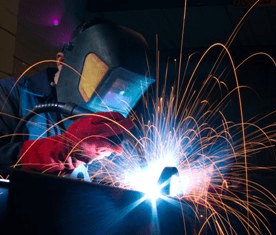All About Monel®, Part Two: Can you Weld Monel®?
In our previous blog post, we began our discussion of Monel® and its characteristics, specifically talking about its excellent corrosion resistance. Here, we will answer the second of the three frequent questions we receive about the metal:
Can You Weld Monel®?

Monel is often welded via gas tungsten arc, gas metal arc, and submerged arc welding. In these cases, Monel filler metal 60 is sometimes used, which has the same high strength and corrosion resistance of Monel alloy. As there are different compositions of Monel (which we will cover in the next of this three-part series), specific characteristics and usage of fillers depend on the Monel being used. The most often sought after and required grade of Monel is Monel 400. Monel alloy 400 displays the same proportions of nickel and copper, found naturally in the nickel ore from certain mines.
In addition to welding, Monel can be brazed and soldered. Monel can be used in different forms and shapes, from wires to flat sheets, fittings, and tubing. Interestingly, because of Monel’s corrosion resistance and weldability, it has been the metal of choice not only for obvious applications, such as chemical and marine equipment, but for many common, yet surprising products. It was used for military dog tags in World War I and II, as the roofing of New York City’s original Pennsylvania Station, and in parts of the Clock of the Long Now, currently under construction and designed to run for 10,000 years
If you have specific questions about the weldability of Monel, please feel free to contact us. Stay tuned for the conclusion of this three-part series on Monel.






